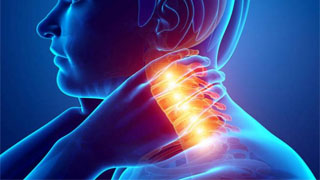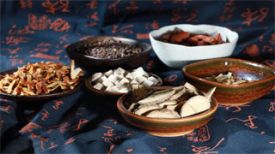
In today's society, chronic neck pain is no longer limited to a specific population, but has become a common health problem across age groups and occupational fields. Whether it is office workers, students, or the elderly, they may all encounter the visit of this' invisible visitor '.
Chronic neck pain not only brings persistent and frequent discomfort, but also seriously affects the quality of life, even limits people's daily activity ability, reduces work efficiency, and may lead to emotional suppression.
Neck pain and cervical headache are usually chronic diseases, mainly caused by a sedentary lifestyle and daily life stress. These symptoms gradually appear and eventually become almost permanent, with periods of deterioration and relief.
The anatomical structure of the neck
The neck is a part of the spine, which is a stacked and interconnected column composed of 33 roughly disc-shaped bones (vertebrae) that make up the basic structural components of the body.
The neck is composed of the first seven vertebrae of the spine, which together form a part called the cervical spine. The topmost vertebra is called C-1, which is directly connected to the bottom of the skull and uniquely allows for head rotation.
There is a connective tissue disc between each vertebra, filled with a gelatinous substance called the nucleus pulposus. Intervertebral discs provide cushioning and spacing, and help ensure proper alignment of the spine.
Almost every pair of vertebrae is connected by a pair of tiny joints, very similar to the joints in the knees, shoulders, and fingers, located deep in the spine.
Each vertebra has several holes (nerve holes) through which the spinal cord and spinal nerve roots pass to reach other parts of the body.
The bones of the cervical spine serve as anchor points for all soft tissues in the neck, including muscles, tendons, and ligaments, giving them mobility and flexibility.
Overall, all of these internal neck structures support the bulky and clumsy human head, which typically weighs about eleven pounds.
The two most common causes of chronic neck pain are the small joints and intervertebral discs.
apophyseal joint
The small joints are located deep in the spine and have the same structure as all other synovial joints in the body: two circular bone ends are covered with a thin layer of cartilage and surrounded by fibrous joint capsules filled with synovial fluid.
These small joints may be damaged in a neck sprain, with the head violently hitting forward, rebounding from the chest, and then equally violently hitting backward. As a result, the joint capsule may tear, causing synovial fluid leakage, or the cartilage itself may tear, causing the connected vertebrae to grind together.
When the cartilage inside the small joints wears out due to normal use or tears due to injury, it may lead to cervical osteoarthritis/spinal disease (also known as cervical arthritis). The resulting grinding between vertebrae may lead to inflammation, bone spurs, and nerve compression, as the tiny spaces within the vertebrae used for nerve channels are compressed and closed.
Cervical spine keyboard protrusion
2、 Unveiling the veil of chronic neck pain: multiple triggers
The main factors causing the chronicity of symptoms are:
posture
Maintaining poor posture for a long time, such as working, driving, or reading in front of a computer screen, can cause sustained tension in the neck muscles, leading to chronic strain and potentially developing into cervical myofascial inflammation or other neck structural imbalances. The relaxed kyphotic posture places the head in an asymmetric position protruding forward and tightens the neck muscles and joints. The accumulation of pressure ultimately leads to pain and discomfort.
Breathing mode
If we take deep breaths spontaneously, we will notice that we have lifted our chest. Lifting the top of the chest for inhalation is accomplished through the respiratory assist muscles located around the neck, which create tension in the superficial muscles of the neck and the upper and middle chest areas.
Shoulder muscle weakness
When the muscles around the shoulders become weak, the neck muscles exert extra effort to stabilize the area and support the arm to lift. This alternative strategy can cause fatigue in the neck muscles and lead to chronic neck pain, especially when engaging in activities above the head.
Skeletal structural changes: With age, cervical intervertebral discs may undergo degeneration, such as cervical disc herniation and cervical osteophyte formation (cervical spondylosis). These pathological changes can compress nerve roots and blood vessels, inducing chronic neck pain.
Neurogenic factors: Certain neurological disorders, such as cervical spinal stenosis, spinal cord perforation, etc., may also cause chronic pain in the neck and even upper limbs.
Psychosocial factors: Long term mental stress, anxiety, depression, and other psychological states may exacerbate neck muscle tension and promote musculoskeletal pain by affecting the nervous system and endocrine mechanisms.
The impact of other systemic diseases, such as rheumatic and immune diseases, tumor metastasis in the neck area, endocrine metabolic abnormalities, etc., may also indirectly cause chronic neck pain.
3、 Panorama of Symptoms of Chronic Neck Pain
Pain experience: Neck pain usually manifests as stiffness, soreness, or dull pain, which can persist and may spread to the shoulders, back, and even head.
Restricted mobility: When the neck rotates or bends, the pain often intensifies, and in severe cases, it may affect basic daily movements such as turning back or looking up.
Neurological symptoms: Nerve compression caused by cervical spondylosis may be accompanied by symptoms such as numbness, stabbing pain, and weakness in the arms. Some patients may even experience gait instability, coordination disorders, etc.
Other accompanying symptoms: Although relatively rare, chronic neck pain can sometimes be accompanied by symptoms such as dizziness, tinnitus, blurred vision, nausea, etc. These may be adverse effects of cervical spondylosis on the surrounding blood vessels or inner ear balance system.
4、 Personalized and diversified rehabilitation journey
Physical therapy: hot compress, cold compress, electrotherapy, ultrasonic therapy, massage, acupuncture and moxibustion and other methods are used to help relieve neck muscle tension, improve blood circulation, and accelerate the absorption of inflammation.
Body posture correction and exercise rehabilitation: With the guidance of professional therapists, neck muscle strengthening training and flexibility exercises such as yoga, Pilates, etc. can be used to adjust poor body posture, enhance neck stability and tolerance.
Medication therapy: For different types of pain, doctors will prescribe appropriate over-the-counter or prescription medications, such as nonsteroidal anti-inflammatory drugs, muscle relaxants, neurotrophic drugs, etc., to alleviate pain and control inflammation.
Manual therapy: For specific types of cervical spondylosis, such as cervical facet joint disorders, professional manual reduction can alleviate pain.
Lifestyle adjustments: Maintain good sitting and sleeping posture, allocate work and rest time reasonably, try to avoid using electronic devices with lowered heads for long periods of time, and regularly engage in neck relaxation exercises.
Psychological intervention: When necessary, use psychological counseling and cognitive-behavioral therapy to assist patients in managing pain and related psychological reactions, in order to improve their quality of life.
Surgical treatment: For chronic pain caused by severe cervical spondylosis, if conservative treatment is ineffective, minimally invasive surgery or open surgery may be considered to relieve nerve roots and alleviate pain.
The following is a detailed set of step-by-step guidance for exercise rehabilitation of chronic neck pain, aimed at helping patients gradually relieve neck pain, enhance neck muscle strength, improve neck flexibility, and improve neck posture. Please note that before starting any new rehabilitation exercise plan, especially for those who already have chronic pain symptoms, it is recommended to consult a doctor or physical therapist to ensure that the exercise method is suitable for their own situation.
5、 Sports rehabilitation steps
In terms of specific rehabilitation exercises, it is recommended to perform a series of gentle neck muscle stretching, relaxation, and strengthening exercises, such as neck bending, forward and backward bending, nodding exercises, lateral rotation, and other basic movements; At the same time, yoga and Pilates exercises such as tablet support, four point kneeling, neck rolling, and neck bridge also help improve neck flexibility and strengthen deep muscles.
When engaging in such exercises, it is important to pay attention to moderation and avoid excessive force. If you feel pain or dizziness, you should stop immediately. It is best to do it under professional guidance to ensure the safety and effectiveness of exercise, combined with physical therapy and regular sleep, to jointly maintain neck health.
Neck muscle stretching and relaxation
Neck bending and stretching
Sit in a chair, keep your back straight, place your feet flat on the ground, gently hold the left side of your head with your right hand, slowly tilt your head to the left until you feel a comfortable stretch in your right neck, and hold this position for 15-30 seconds. Repeat the same action by changing sides.
Neck anterior posterior curvature
Stand or sit upright, slowly tilt your head forward, try to bring your chin close to your chest, feel the stretch on the back of your neck, and hold for a few seconds. Then, slowly lift your head to look at the ceiling and feel the stretch on the front of your neck for a few seconds.
Neck dynamic movement
de Musset
Like nodding, stand or sit up, slowly tilt your head forward, try to bring your lower jaw close to your chest, then slowly lift your head back to its original position, repeat 10-15 times.
Lateral rotation
Keep your body upright, slowly rotate your head to the left, try to keep your left ear close to your left shoulder, hold for a few seconds, then rotate to the right again, repeat 10-15 times, ensuring smooth and painless movements.
Neck Strengthening Exercise
Back and neck muscle strengthening
You can try using a flat support or a four point kneeling position to keep your back and neck in a straight line and exercise the muscles in your neck and back. In the initial stage, it is possible to start with short-term maintenance and gradually extend the support time.
Neck muscle resistance training
Hold a lightweight dumbbell or mineral water bottle, sit or stand, slowly tilt your head to one side to counteract the slight weight of the dumbbell, feel the contraction of the muscles on the side of your neck, and then switch sides and repeat. Resistance training can also be performed on the front and back of the neck.
Integrating yoga and Pilates
Neck Rolling
Lie flat on a yoga mat, rest your head on the back of your hand, and slowly roll your head from one side to the other, as if drawing a large circle, with smooth and moderate movements.
Cat Cow Style
Lying on all fours, imitating the cat's lazy posture, dynamically stretching the neck and spine by arching and collapsing the back, which is very beneficial for strengthening the deep muscles of the neck.
Progressive muscle relaxation training
Active relaxation training
Consciously contract and relax various muscles in the neck, such as tightening and relaxing the shoulder and neck muscles respectively, while cooperating with deep breathing to help release tension and reduce pain.
Office daily activity exercises
Scheduled activities
For people who work sitting for long periods of time, brief neck movements such as swinging the head left and right, nodding up and down, and rotating the shoulders should be performed at regular intervals (such as every hour) to promote blood circulation and relieve neck muscle fatigue.
When performing these movements, follow the following principles:
Each action should be slow and controllable, without moving quickly or suddenly exerting force.
If you feel increased pain or discomfort during exercise, you should stop immediately and seek professional advice.
Don't force yourself to reach the maximum extent, especially in the early stages of rehabilitation, comfort should be the main focus.
It can be combined with physical therapies such as hot compress and cold compress to assist in the effectiveness of exercise therapy.
in short
The key to treating chronic neck pain lies in comprehensive assessment and personalized treatment. Early diagnosis, early intervention, and active adoption of appropriate rehabilitation measures, supplemented by personal health management, can effectively alleviate pain, restore neck function, reduce recurrence rates, and ensure patients return to normal daily life and work.
At the same time, developing good lifestyle habits and health awareness is of great significance for preventing neck pain. In practice, the organic combination of physical therapy, exercise rehabilitation, medication therapy, and psychological therapy, combined with professional medical guidance, is the grand road to bid farewell to chronic neck pain and move towards a healthy neck life.


